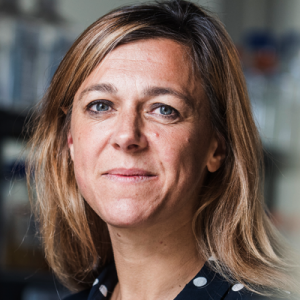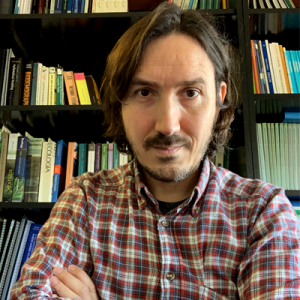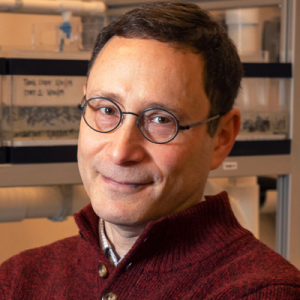Jolanta EJSMONT – KARABIN https://www.scopus.com/authid/detail.uri?authorId=6701719024
Research Station in Mikołajki, Nencki Institute of Experimental Biology, Polish Academy of Sciences, Poland
Topics: Ecology and biology of Rotifera and their role in trophic chains in the lake pelagial; species diversity in the microhabitats of the lake littoral (psammon and epizoon); using zooplankton to assess trophic state of lakes.
Rotifers of lake psammon: A knowledge synthesis 
Most information on rotifers living in lake sands comes from the 1930s, when the first reports on this subject by Jerzy Wiszniewski appeared. This discovery caused a short-term increase in interest in psammon among the biologists of the world, which resulted in the appearance of several studies devoted to this habitat in this and the next decade. The publications from this period are still an important source of information about the characteristic features of psammolittoral and its organisms, as in the following years there was a decline in the interest in lake psammon. The research on the ecology of the lake psammon has returned in the last decade of the XX century and the studies included a description of the species structure and functioning of psammon rotifers, as well as the influence of mechanical, physical and chemical factors on psammon organisms. The analysis of literature materials and the results of my own research shows that although we have enriched significantly our knowledge about the ecology of psammon communities of Rotifera since Wiszniewski’s discovery, the species richness of this group in geographical terms is still unknown. Due to the small number of studies in this area, we also do not know the level of endemism among the psammon rotifers. The role of psammon rotifers in benthic food webs is another issue requiring research.
Robert L. WALLACE
Department of Biology, Ripon College, Wisconsin, USA https://www.scopus.com/authid/detail.uri?authorId=57210957131
Topics: A comprehensive understanding of the biology of rotifers, including taxonomy, ecology, structure and function, and distribution.

The undiscovered country: grand challenges in rotifer biology
Robert L. WALLACE1,*, Rick HOCHBERG2, Elizabeth J. WALSH3
1Department of Biology, Ripon College, Ripon, WI, USA
2University of Massachusetts Lowell, Lowell, MA, USA
3University of Texas at El Paso, El Paso, TX, USA
Various authors have attributed the statement “All science is either physics or stamp collecting” to the Physicist, Ernest Rutherford. Putting this sarcastic quip aside, we know that scientific disciplines come of age only when they can generate testable, repeatable, and falsifiable hypotheses; yet each discipline begins by simply collecting observational information. It is clear, even with a casual assessment of the previous 15 International Rotifer Symposia (IRS) and the extensive literature published since our first congress, that rotifer research has moved well beyond merely describing species, making lists of their occurrences, and describing changes in their population dynamics. While our discipline has come of age, and in spite of its excellent progress, we believe more remains to be done. Here we nominate several grand challenges in rotifer research; accordingly, we need to advance our understanding of rotiferan (1) neurobiological connectomes, (2) genomic architectures and control systems, (3) cellular physiology, (4) life histories in light of their acanthocephalan relatives, (5) ecological responses to stresses, (6) biogeography and distribution of cryptic species, (7) morphospace (trophi, jointed appendages, and body form), and (8) evolution within the context of all gnathiferans. Additionally, researchers must give preference to model species other than Brachionus spp., the white mice for rotiferologists. Besides these fields of study, rotiferologists should (9) re-establish educational venues, either in a convenient physical place and/or electronically and (10) make reliable, internet-based databases widely available to all. We expect contributions to IRS-16 will provide new information in these and other fields.
Natalia KUCZYŃSKA-KIPPEN https://www.scopus.com/authid/detail.uri?authorId=6602651209
Department of Water Protection, Faculty of Biology, Adam Mickiewicz University, Poznań, Poland
Topics: Ecology of small and shallow aquatic ecosystems; importance of macrophyte cover in ecological status of small water bodies, development of methods for diagnosis of the water quality state, particularly human-induced transformation in small water bodies; use of zooplankton as a valid instrument in ecological analyses.

Rotifers in ecological studies of small, shallow and macrophyte-dominated aquatic ecosystems
The constant global change of our natural environment underlies the urgent need to understand but also to assess the speed and direction of changes. Therefore, serviceable monitoring tools must be developed and the application of biological communities can serve this purpose; particularly methods that can assess both biodiversity and diagnose water quality conditions. Rotifers provide suitable community indices to identify the response to abiotic and biotic changes, and habitat type in reference to the level of human stress in the catchment area. Macrophytes provide rotifers with diverse microhabitats, whose complexity primarily determines the structure of species and functional groups distribution. In the case of small and shallow ecosystems aquatic vegetation plays a particularly crucial role. However, these ecosystems have not been included in ecological studies for years but are immensely important in water retention but especially in preserving regional and global diversity. The presence of macrophytes, particularly of elodeids, increases overall diversity, the occurrence of valuable species for maintaining high ecological status and share of littoral rotifers, but it also contributes to the reduction of rotifers characteristic of eutrophic conditions. The degree of human transformation governs the occurrence of specific rotifer communities but despite strong anthropopression (e.g. urbanisation or farmland) macrophyte-dominated water bodies still remain a source of increased diversity including rotifers. All the above certify the considerable suitability of rotifers for environmental studies, as they swiftly and reliably respond to changes in their environment.
Karine Van DONINCK https://www.scopus.com/authid/detail.uri?authorId=6603008034
Department of Molecular Biology & Evolution, Université Libre de Bruxelles, Belgium
Topics: Fundamental questions in evolutionary biology, understanding factors contributing to genomic variation and adaptation of living systems, using bdelloid rotifers as a model system.
 DNA repair and homologous recombination during non-reductional meiosis in the asexual rotifer Adineta vaga and the importance of horizontal gene acquisition
DNA repair and homologous recombination during non-reductional meiosis in the asexual rotifer Adineta vaga and the importance of horizontal gene acquisition
Karine VAN DONINCK1,2*, Rohan ARORA1,2, Alessandro DERZELLE2,Boris HESPEELS2, Antoine HOUTAIN1,2, Marc LLIROS2, Jitendra NARAYAN2, Emilien NICOLAS1,2, Paul SIMION2, Matthieu TERWAGNE2, Jean-François FLOT1, Thomas LENORMAND3, Bernard HALLET4
1Université Libre de Bruxelles, Faculty of Sciences, Brussels, Belgium
2University of Namur, URBE, LEGE, Namur, Belgium
3Centre d’Ecologie Fonctionnelle et Evolutive (CEFE), Montpellier Cedex 5, France
4Université Catholique de Louvain, Louvain-la-Neuve, Belgium
Bdelloid rotifers are microscopic animals notorious for their long-term persistence in the apparent absence of canonical sexual reproduction. This evolutionary paradox is often counterbalanced by invoking their ability to repair high levels of genome breakage caused by desiccation and other genotoxic stresses. How bdelloid rotifers persist despite the expected negative consequences of asexuality and how they survive extreme conditions has been the focus of my research group. We employ population and comparative genomic analyses to study evolutionary processes and recently started to explore the molecular mechanisms of their hyper-resistance to desiccation and radiation. I will present the chromosome-scale genome assembly of our model system Adineta vaga, having homologous chromosomes with signatures of recombination. Genomes from clonal lines maintained in the laboratory have been sequenced at different timepoints and I briefly present the genome changes in A. vaga and the prevalence of homologous recombination. By studying spatiotemporal dynamics of DNA damage response in A. vaga, we found that repair of germline genomic lesions is delayed to a specific time window of oogenesis during which homologous chromosomes adopt a meiotic-like juxtaposed configuration. Adineta vaga undergoes a non-canonical meiosis allowing homologous chromosomes to pair and recombine without segregating into haploid gametes, as in automictic parthenogens. It results in a faithful reconstitution of the genome in the offspring, while DNA repair in somatic nuclei occurs within 24h after recovery, producing a partially reassembled genome. Finally, some of the first molecular actors identified in A. vaga that might play a role in their extreme resistances are presented.
Vlatka FILIPOVIĆ MARIJIĆ https://www.scopus.com/authid/detail.uri?authorId=55551242500
Division for Marine and Environmental Research, Ruđer Bošković Institute, Zagreb, Croatia
Topics: Environmental Parasitology: application of acanthocephalans in environmental studies as important bioindicators of contaminant exposure, especially metals; Metallomics: Rotifera related sister group, Acanthocephala, as metal accumulators in the aquatic ecosystem – metal distribution, protein binding, bio-imaging.
 Acanthocephalans, fish intestinal parasites, as bioindicators of water quality in the freshwater ecosystem
Acanthocephalans, fish intestinal parasites, as bioindicators of water quality in the freshwater ecosystem
Vlatka FILIPOVIĆ MARIJIĆ1,*, Irena VARDIĆ SMRZLIĆ1, Tatjana MIJOŠEK1, Zrinka DRAGUN1, Zuzana REDŽOVIĆ1, Sara ŠARIRI1, Damir VALIĆ1, Tomislav KRALJ1, Ivana KARAMATIĆ1, Dušica IVANKOVIĆ1, Nesrete KRASNIĆI2, Marijana ERK1
1Ruđer Bošković Institute, Division for Marine and Environmental Research, Zagreb, Croatia
2University of Vienna, Department of Structural and Computational Biology, Vienna, Austria
Acanthocephala is a phylum of endoparasites hosted by Mandibulata and Gnathostomata, and phylogenetically related to Rotifera. Acanthocephalans lack digestive system, and therefore depend on host micronutrients, which are absorbed from the fish intestine. This especially involves essential metals, as elements of physiological importance, but also toxic elements which are absorbed even more effectively in acanthocephalans than in other commonly used bioindicator organisms, like fish, crustaceans, and bivalves. Thus, novel field Environmental Parasitology investigates linkage between contamination and parasitism, and possible application of acanthocephalans as indicators in environmental risk assessment studies. Estimation of metal exposure in Croatia was conducted in the lowland Sava River, using Pomhorhynchus laevis and Acanthocephalus anguillae hosted by European chub (Squalius cephalus) and in the karst Krka River, using Dentitruncus truttae hosted by brown trout (Salmo trutta). Acanthocephalan prevalence was much higher in fish from Krka than the Sava River and all acanthocephalan species showed higher metal accumulation than intestinal tissue of fish host. Bioconcentration factor (BCF), the ratio of the element concentration in the parasites to that in host gastrointestinal tissue (BCF = C[parasite]/C[host intestine]), confirmed especially effective accumulation of toxic elements in acanthocephalans, like Ag, Cd, and Pb. Presented research confirmed acanthocephalans as valuable biological indicators of the water quality, which should be combined with a set of physical, chemical and biological parameters, and might in the future be correlated with dynamics and diversity of the free-living rotifers in the freshwater ecosystem for the purpose of comprehensive estimation of environmental health.
Eduardo M. GARCIA-ROGER https://www.scopus.com/authid/detail.uri?authorId=8707405500
Cavanilles Institute for Biodiversity and Evolutionary Biology, University of Valencia, Valencia, Spain
Topics: Adaptation to time-varying environments; Ecological and evolutionary implications of diapause egg banks; theoretical studies of bet hedging strategies in rotifers inhabiting unpredictable environments, field research and experimental evolution approaches, life-history traits and the genomic basis for adaptation.
 Bet hedging in rotifers: Optimal diapause strategies in variable environments
Bet hedging in rotifers: Optimal diapause strategies in variable environments
Eduardo M. GARCÍA-ROGER1,*, Eva TARAZONA1, Lluís FRANCH-GRAS1, Manuel SERRA1, María José CARMONA1
1Cavanilles Institute of Biodiversity and Evolutionary Biology, University of Valencia, Valencia, Spain
Bet hedging (BH) is hypothesized as an adaptation evolving in unpredictable environments. It is defined as a strategy that reduces across-generation variance in fitness at the cost of reducing arithmetic mean fitness either through the production of a variety of phenotypes in a genotype’s offspring (diversified BH) or a unique low-risk phenotype (conservative BH). While the empirical testing of BH has been rather elusive, rotifers and their habitats have been postulated as an appropriate study system for such assessment. Here we review our own results on BH in rotifer diapause traits, but also point out new lines of research currently underway. We exploit BH theory to propose accurate predictions on two key traits: the timing of diapausing egg production and their hatching fraction. Specifically, we expect that the higher the unpredictability in the length of the growing season of rotifer habitats, (1) the earlier the timing for diapausing egg production, and (2) the lower the hatching fraction. We provide correlational evidence supporting these predictions from field populations of Brachionus plicatilis covering a gradient of environmental unpredictability. Further evidence is gained through the experimental study of evolving populations under predictable versus unpredictable divergent selective regimes. While our findings demonstrate empirically the existence of BH regarding unpredictability across growing seasons, diapause traits may still be shaped by other sources of unpredictability, such as that operating within a growing season whose onset is not reliable (false starts). This is a current research topic for which new predictions are being formulated and tested.
Phillip NEWMARK https://www.scopus.com/authid/detail.uri?authorId=7102403834
Howard Hughes Medical Institute; University of Wisconsin, USA
Topic: germ cell development and regeneration in planarians as well as the developmental biology of parasitic flatworms, identification of a rotifer-derived compound that paralyses infective schistosome larvae.
 Exploring the mechanisms of Schistosome Paralysis Factor production in Rotaria rotatoria
Exploring the mechanisms of Schistosome Paralysis Factor production in Rotaria rotatoria
Phillip NEWMARK1,*, Ian DONOVAN2, Melanie ISSIGONIS3
1Howard Hughes Medical Institute, Morgridge Institute for Research, University of Wisconsin, Madison, WI, USA
2 Howard Hughes Medical Institute, Morgridge Institute for Research, Madison, WI, USA
3Morgridge Institute for Research, Madison, WI, USA
Schistosomes are parasitic flatworms that infect over 200 million people, causing the neglected tropical disease schistosomiasis. A single drug, praziquantel, is currently used to treat schistosome infection. The potential emergence of praziquantel-resistant strains makes developing strategies to prevent infection an important goal. Rotifers colonizing the shell of the schistosome’s intermediate host snail (Biomphalaria glabrata) produce a water-soluble factor that paralyzes cercariae, the life-cycle stage infecting humans. Our subsequent results revealed that of the two rotifer species living commensally on the snail host, only Rotaria rotatoria produces Schistosome Paralysis Factor (SPF), a novel tetracyclic alkaloid that paralyzes cercariae and prevents infection of a mammalian host. To understand how R. rotatoria synthesizes this unique molecule we have begun developing genomic tools for studying this fascinating organism. Here, we present an update on our efforts to mine transcriptomic and genomic data for candidate alkaloid-synthetic genes and to develop functional tools for testing their requirement in SPF production.
